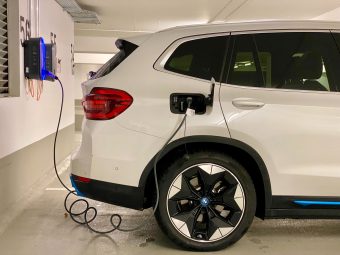
In Serbia, during 2021, a total of 113 electric vehicles were sold, which has not affected the disturbing fact that more than 80 per cent of the total vehicle fleet consists of used cars older than ten years. The Government of Serbia has, once again, adopted the Decree on the conditions and manner of conducting a subsidized purchase of new electric and hybrid vehicles. We talked to Mr Milan Belin, the president of the Serbian Association of Vehicle and Spare Parts Importers, to find out if we are finally ready to embrace the changes or dismiss them because of what we are used to do.
EP: Sales of electric vehicles are globally on the rise year after year as part of the combating climate change strategy. How would you assess the traffic electrification process in Serbia so far? Why are Serbian citizens still having a hard time when faced with a decision to buy an electric vehicle (EV)?
Milan Belin: Electrification is a part of a very important strategy that brings global measures to reduce and prevent the greenhouse effects. As one of the big polluters, the automotive industry is adapting to changes, maybe even faster than we can accept. Electrification is related to infrastructural changes, and I primarily refer to the EV charger network, as well as raising awareness that these vehicles pollute less. In addition to electric, we have hybrid and plug-in hybrid vehicles that have transitional technologies since they do not depend on the charger network whatsoever. Let’s not forget to mention that electric vehicles are still a bit more expensive, but not so much more expensive than their diesel competitors. However, we also face great ignorance and distrust in new technologies, in addition to our infrastructure, which is still underdeveloped. Yes, the sales numbers are picking up, but those numbers are still small.
In focus:
EP: How many electric vehicles were sold on our market last year and do you consider that number satisfactory? Also, have subsidies for the purchase of electric and hybrid cars given the desired results so far? How many of those who applied managed to get subsidies?
Milan Belin: The data show that in 2021, 113 electric vehicles were sold, of which 71 were passenger vehicles and 41 were light commercial vehicles. Compared to 2020, when 30 electric passenger vehicles were sold only, the increase is more than obvious. Additionally, hybrid models are also subsidized, and sales data show an increase of more than 100 per cent. The subsidies certainly encourage sales, but perhaps more importantly, raise awareness that the purchase of environmentally friendly vehicles has support and makes sense in the long run.
EP: What are the obstacles EV importers and distributors are faced with? How do you comment on the reports by the importers about the deficit in the vehicles supply and the declining stock?

Milan Belin: The biggest challenge in the placement of electric vehicles for our importers is certainly infrastructure. By that, I mean the internal infrastructure of authorized dealers and service technicians, as well as the public network of chargers. The sale of electric vehicles requires serious investment and preparation in maintenance and charging infrastructure. With these conditions, we still cannot rely on sales, and it is impossible to estimate the return on investment. It is one of the reasons why even manufacturers do not put pressure on the importers here to introduce new electric models to this market. However, it will inevitably happen because most new models coming out are electric.
On the other hand, the vehicle deficit was caused by unforeseen circumstances caused by the pandemic. Due to closures in most countries, the slowdown in production has led to the cancellation of orders for parts intended for installation in vehicles. In particular, we are talking about microchips, or semiconductors, which are an essential part of the final product. It is estimated that any model today includes between 1,300 and 1,500 semiconductors on average. As microchips are being incorporated into almost all electronic products today, we have increased demand and insufficient production. Once the car production started to return to its course slowly, there was a shortage because suppliers negotiated the placement of their products with others. So, our situation is that the production is still slow, and it is not possible to make vehicle stock.
Interviewed by: Milica Marković
Read the story in the new issue of the Energy portal Magazine ELECTROMOBILITY.



